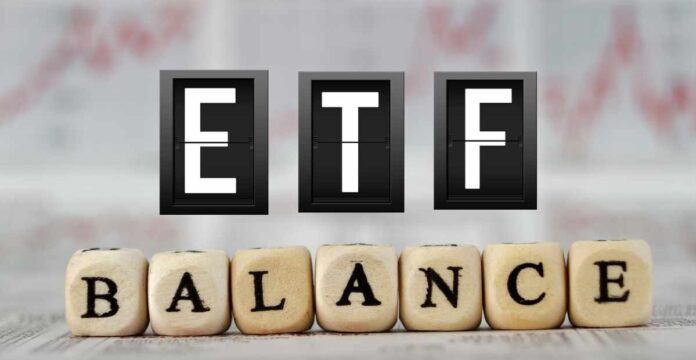Exchange-traded funds (ETFs) have become one of the most popular investment vehicles due to their flexibility, low costs, and ability to track various indices. But unlike stocks, ETFs need periodic adjustments to maintain their intended structure—this process is known as rebalancing.
ETF rebalancing is essential to ensure the fund stays aligned with its underlying index, risk parameters, and asset allocation strategy. But when and how do ETFs rebalance? Let’s break it down.
What Is ETF Rebalancing?
ETF rebalancing refers to the periodic adjustment of the fund’s holdings to maintain its target allocation. This can involve buying or selling assets to reflect changes in the market, sector shifts, or modifications in the benchmark index.
Unlike actively managed mutual funds, ETFs follow a passive strategy—they track an index and only adjust when necessary, ensuring minimal trading and costs.
Why Do ETFs Need to Rebalance?
Rebalancing is crucial for ETFs to stay true to their investment objective. Some key reasons include:
- Maintaining Target Allocation: Market movements can cause certain stocks or sectors to grow disproportionately, leading to a misalignment of the fund’s intended allocation.
- Responding to Market Fluctuations: ETFs that track specific indices need to rebalance when the index itself changes.
- Accommodating Corporate Actions: Stock splits, mergers, acquisitions, and dividend payouts can impact the composition of an ETF.
When Do ETFs Rebalance?
ETF rebalancing generally follows two main types of schedules: scheduled rebalancing and event-driven rebalancing.
Scheduled Rebalancing
Most ETFs rebalance on a quarterly, semi-annual, or annual basis, depending on their strategy.
- Quarterly Rebalancing: Many ETFs, especially those tracking broad indices, rebalance every three months to keep their allocations accurate.
- Semi-Annual Rebalancing: Some funds adjust their holdings twice a year to maintain balance without incurring excessive transaction costs.
- Annual Rebalancing: Certain ETFs, particularly thematic or sector-based ones, rebalance once a year.
Event-Driven Rebalancing
Apart from scheduled rebalancing, ETFs also rebalance in response to major events, including:
- Market Movements: If a stock experiences extreme price fluctuations, an ETF might adjust its weighting.
- Corporate Actions: If a company in the ETF undergoes a merger, acquisition, or stock split, the ETF needs to update its holdings.
- Index Composition Changes: If an ETF tracks an index (like the S&P 500) and that index adds or removes companies, the ETF must rebalance accordingly.
How Does ETF Rebalancing Work?
When an ETF rebalances, it follows a structured process:
- Assessing the Current Holdings: The fund manager reviews the ETF’s current asset distribution.
- Comparing with the Target Allocation: Any discrepancies due to market movements or index changes are noted.
- Buying or Selling Securities: To realign the portfolio, over-weighted assets are sold, and under-weighted assets are bought.
- Ensuring Minimal Impact: ETF managers aim to make these changes with minimal cost and tax implications.
Types of ETFs and Their Rebalancing Schedules
Different types of ETFs have unique rebalancing strategies:
- Market-Cap Weighted ETFs: These rebalance when market capitalization changes significantly.
- Equal-Weighted ETFs: Since all holdings must remain equal, these funds require more frequent rebalancing.
- Thematic and Sector ETFs: These rebalance based on trends and sector performance.
- Bond ETFs: They adjust based on interest rate changes and credit risk shifts.
What Happens When an ETF Rebalances?
ETF rebalancing can have several effects:
- Impact on Stock Prices: Large adjustments can cause price fluctuations in underlying stocks.
- ETF Performance Adjustments: Rebalancing helps maintain risk levels but can cause short-term performance shifts.
- Tax Implications: Capital gains may be realized if securities are sold at a profit.
Pros and Cons of ETF Rebalancing
Pros
✔ Maintains Portfolio Alignment: Keeps the ETF true to its investment strategy.
✔ Reduces Risk Exposure: Prevents over-concentration in high-performing assets.
✔ Adjusts for Market Changes: Adapts to new economic and financial conditions.
Cons
✖ Potential Tax Consequences: Buying and selling assets may trigger taxable events.
✖ Incurred Trading Costs: Frequent rebalancing can increase expenses.
✖ Market Timing Risks: Adjusting holdings at the wrong time could impact returns.
How Investors Can Benefit from ETF Rebalancing
Investors can take advantage of ETF rebalancing by:
- Understanding Rebalancing Dates: Knowing when an ETF rebalances can help anticipate price movements.
- Strategizing Around Adjustments: Investors can capitalize on changes by adjusting their own portfolios accordingly.
Conclusion
ETF rebalancing is a crucial process that ensures these funds maintain their target allocation and risk levels. While most ETFs rebalance on a quarterly, semi-annual, or annual basis, some adjust in response to major market events. Understanding how and when ETFs rebalance can help investors make more informed decisions and optimize their portfolios.

A writer, editor, and publisher with a knack for crafting informative articles.

